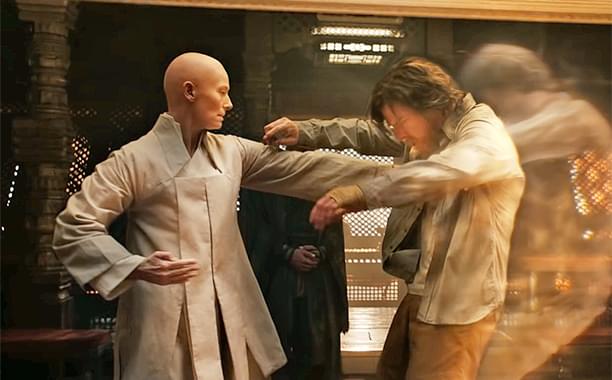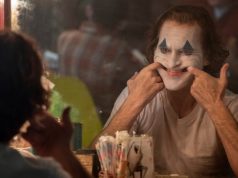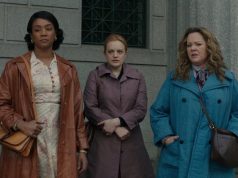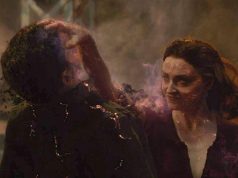
With its trippy inter-dimensional mysticism and heady philosophy, “Doctor Strange” marks the first time in a while that a Marvel Cinematic Universe™ movie has offered anything new to look at or think about. It’s yet another origin story (and similar to Iron Man’s at that), but the mind-bending aesthetic trappings give it a lift. And like “Guardians of the Galaxy,” it stands alone with no direct connection to the Avengers while establishing tantalizing possibilities for future interactions.
Directed by horror veteran Scott Derrickson (“Sinister,” “The Exorcism of Emily Rose”), “Doctor Strange” also boasts the best opening sequence of any Marvel film so far, in which Tilda Swinton (good) and Mads Mikkelsen (bad) and their respective cohorts fight in a gravity-defying, reality-skewing parallel version of London. We don’t know yet who these people are or how this world works, but we understand enough to be drawn into the action, riveted by the “Inception”-like visuals of buildings and streets folding and collapsing on themselves.
Grabbing the audience’s attention right out of the gate is a smart choice anyway, but it’s especially shrewd here, since otherwise there isn’t much action for a while. In New York City, the brilliant but self-centered neurosurgeon Dr. Stephen Strange (Benedict Cumberbatch), his precious hands shattered in a nasty car accident, turns in desperation to Eastern medicine for healing. A sarcastic fellow from the “House M.D.” school of medicine (right down to the phony-sounding American accent), Dr. Strange is crestfallen to discover that the “doctor” he’s been referred to, a Nepalese mystic named The Ancient One (that’s Swinton) who lives in a remote hideaway called Kamar-Taj, isn’t a doctor so much as a sorcerer. Her assertion that he can only regain the full use of his hands through spiritual healing outrages him. “There is no such thing as spirit!” he declares. Then The Ancient One knocks his spirit out of his body for a few seconds so he can see the astral plane. That shuts him up.
“Iron Man” (2008) B
“The Incredible Hulk” (2008) B
“Iron Man 2” (2010) B-
“Thor” (2011) B
“Captain America: The First Avenger” (2011) B
“The Avengers” (2012) B+
“Iron Man 3” (2013) B+
“Thor: The Dark World” (2013) C-
“Captain America: The Winter Soldier” (2014) B
“Guardians of the Galaxy” (2014) B
“Avengers: Age of Ultron” (2015) B-
“Ant-Man” (2015) B
“Captain America: Civil War” (2016) B
“Doctor Strange” (2016) B+
“Guardians of the Galaxy Vol. 2” (2017) B-
“Spider-Man: Homecoming” (2017) B+
“Thor: Ragnarok” (2017) B
“Black Panther” (2018) B
“Avengers: Infinity War” (2018) B-
“Ant-Man and the Wasp” (2018) B
“Captain Marvel” (2019) B-
He learns that the multiverse has countless alternate dimensions, some pleasant and some terrible. Practitioners of the mystic arts can open portals between dimensions, bending the laws of space and sometimes even of time. The Ancient One and her team of sorcerers are tasked with protecting our dimension from “mystic threats,” which now include Kaecilius (that’s Mikkelsen), an immortality-obsessed former Kamar-Taj pupil who stole a forbidden spell and intends to use it to merge our dimension with a dark one where time has no meaning (insert DMV joke here). Dr. Strange wants to learn the mystic arts to heal his body, not save the world, but you can guess where things are heading.
The Ancient One’s second in command, rule-stickler Mordo (Chiwetel Ejiofor), and Wong (Benedict Wong), Kamar-Taj’s librarian and protector of ancient secrets, assist in training Dr. Strange, who turns out to be a natural. Derrickson and his computer wizards do a grand job of making the mystical feel plausible, blending fantasy with reality and scoring some easy laughs with the juxtaposition. (Is the magical-looking word written on a card some kind of mantra? No, it’s Kamar-Taj’s Wi-Fi password.) This middle sequence goes on for too long, but things pick up again when the battle with Kaecilius begins in earnest and we’re treated to more fantastic manipulations of time and space.
The essential components here are no different from most superhero stories: a damaged everyman, a secret power, a hidden enemy, an on-again/off-again girlfriend (fellow surgeon Christine Palmer, played by Rachel McAdams). But the screenplay, credited to Derrickson, “Sinister” co-writer C. Robert Cargill, and Jon Spaihts (“Prometheus”), succeeds by diving head-first into the deeply nerdy mythology established by 50 years of comic books. Rather than squeeze Dr. Strange into the Marvel Cinematic Universe™, the film expands the MCU™ to allow for such things as inter-dimensional travel, alternate realities, and perhaps even the existence of a Higher Power. These new concepts are more than just window-dressing; they represent a fundamental change in this movie universe’s natural laws. It’s breezy, wide-eyed, psychedelic fun that opens the door to unlimited possibilities.
B+ (1 hr., 55 min.; )





